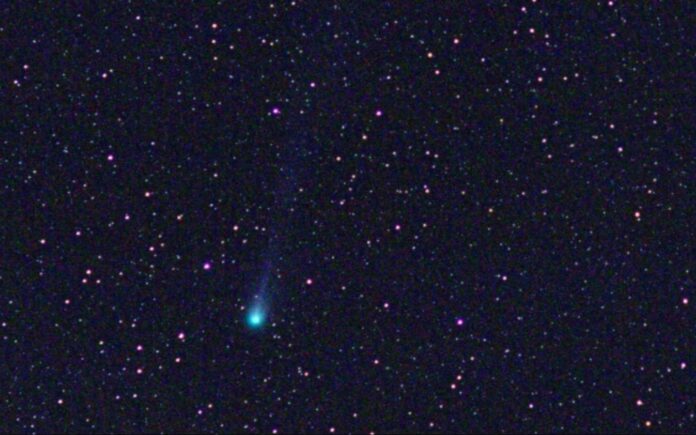Mount Everest sized Comet 12P/Pons-Brooks, also known as “devil comet” which is making its first visit to the inner solar system after more than 70 years, may be visible to the naked eye.
In a rare celestial event, there is a chance that a “devil comet” the size of Mount Everest, which is making its first trip to the inner solar system in almost 70 years, may be visible to the naked eye in the coming weeks.
On April 21, when it will be at its brightest, the once-in-a-lifetime object, also known as 12P/Pons-Brooks, is scheduled to make its closest approach to the Sun.
For sky gazers in the northern hemisphere, the Halley-type comet promises optimal visibility between now and mid-April, albeit with some challenges in spotting it.
Dr. Robert Massey, Deputy Executive Director at the Royal Astronomical Society, emphasized that “Don’t expect it to be dazzlingly bright – the kind of image you see in photographs. It’s not going to be like that.”
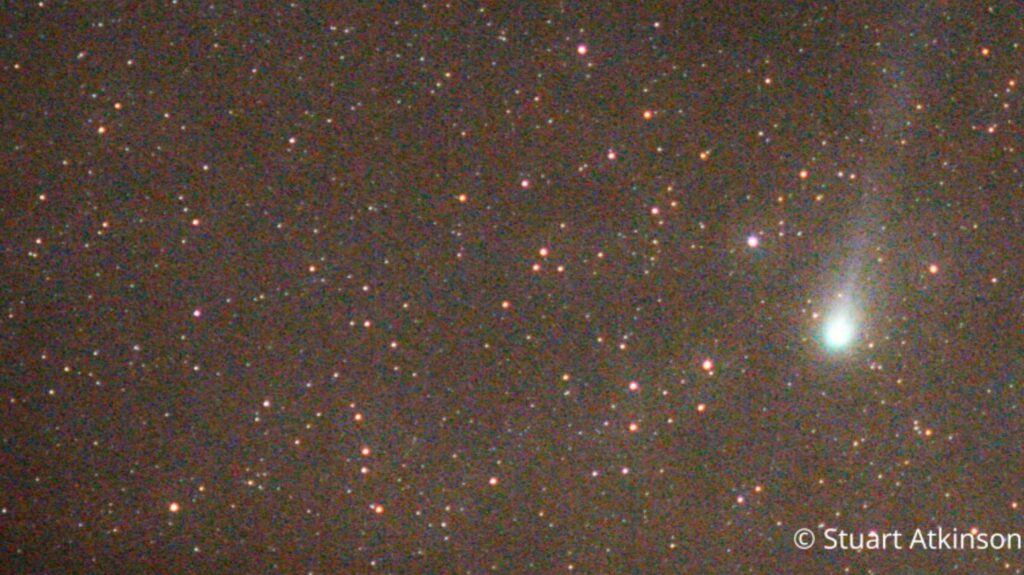
Binoculars are likely to be a necessity for most observers, according to Massey. Utilizing sky-tracking apps or finder charts can significantly enhance the chances of locating the comet amidst the vast expanse of the night sky.
When spotted, 12P/Pons-Brooks is anticipated to appear as a modest, greyish blur, consistent with the typical appearance of comets. Nevertheless, witnessing this event offers a unique opportunity to behold a once-in-a-lifetime celestial marvel, leaving observers with a sense of awe and accomplishment.
Dr. Massey advised astronomers to see Pons-Brooks, which completes its orbit once every 71.3 years and won’t be visible again until 2095, by stargazing in the west-north-west after sunset.
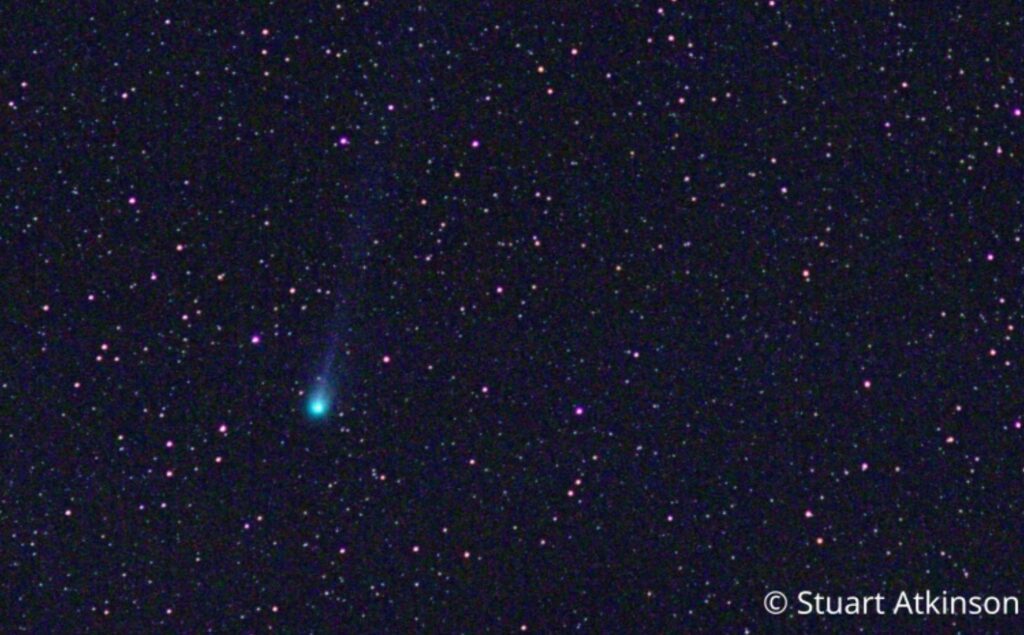
The ice object was identified as a comet in 1812. Its nucleus is estimated to be about 34 km (21 miles) in diameter. Still, it dates back to the 14th century.
It has the names of the British-American astronomer William Robert Brooks, who spotted it on its next orbit in 1883, and the French astronomer Jean-Louis Pons, who made the discovery of it in the early 19th century.
Over the last several months, Pons-Brooks has generated a lot of attention and enthusiasm, partly due to a few unique qualities.
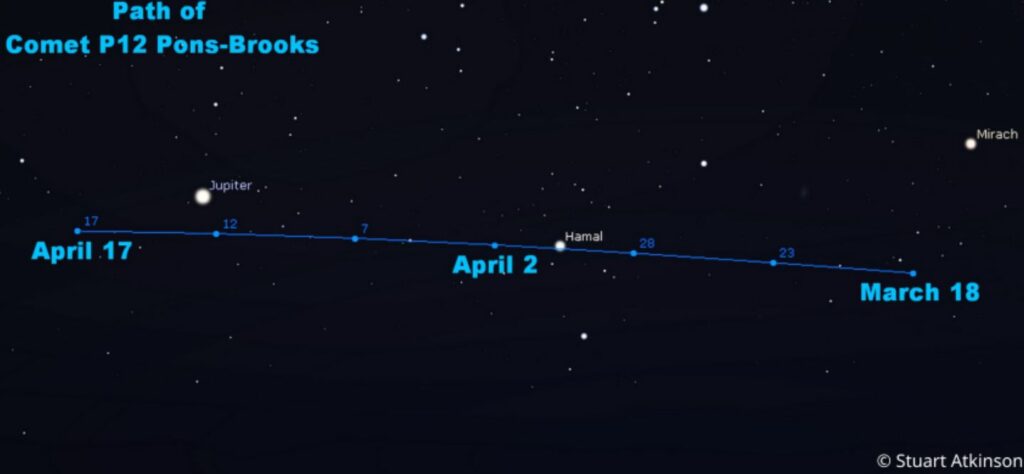
Firstly, images capturing the comet’s approach reveal its intriguing green hue, a phenomenon attributed to the presence of a molecule known as dicarbon, as explained by Dr. Massey. This molecule absorbs sunlight and emits some of it with a distinct green tint, contributing to the comet’s striking coloration.
Another fascinating aspect that has garnered attention from observers worldwide is the comet’s occasional “horned appearance,” leading nickname, the “Devil Comet.”
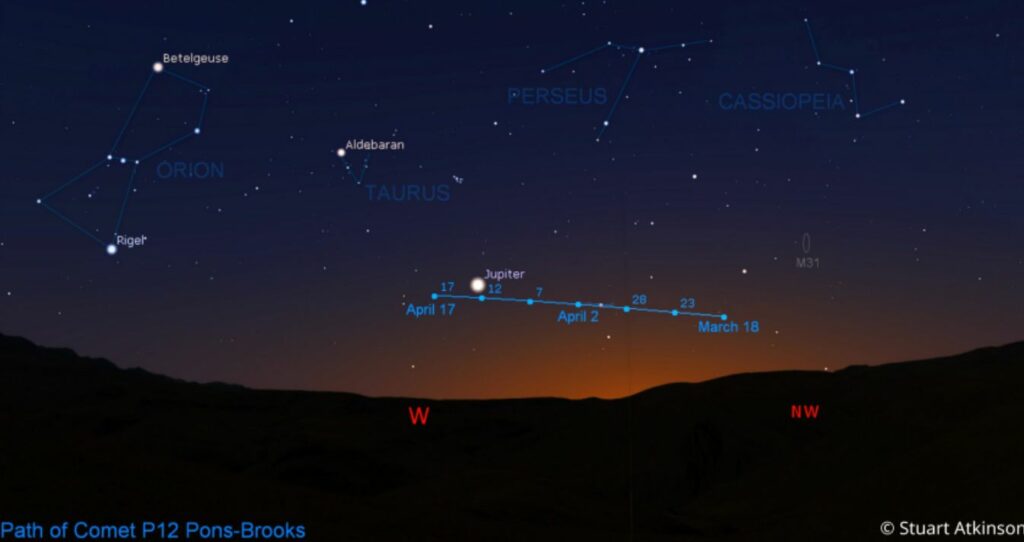
This distinctive feature arises from the comet’s classification as a cryovolcanic comet, indicating that it regularly undergoes eruptions of dust, gases, and ice due to pressure buildup as it heats up.
Image Credit: Stuart Atkinson
